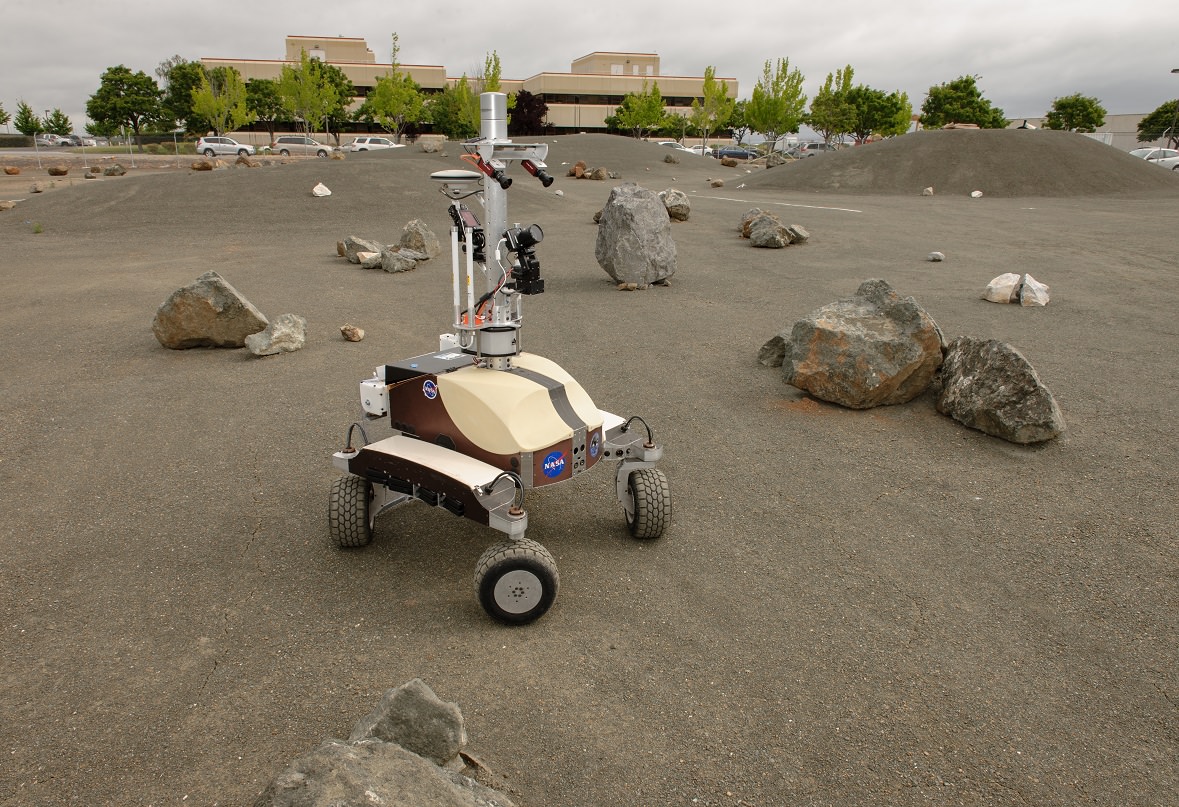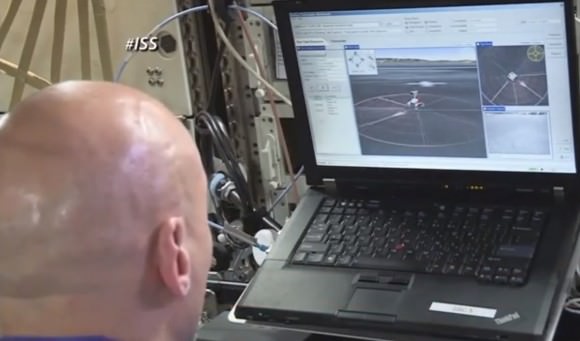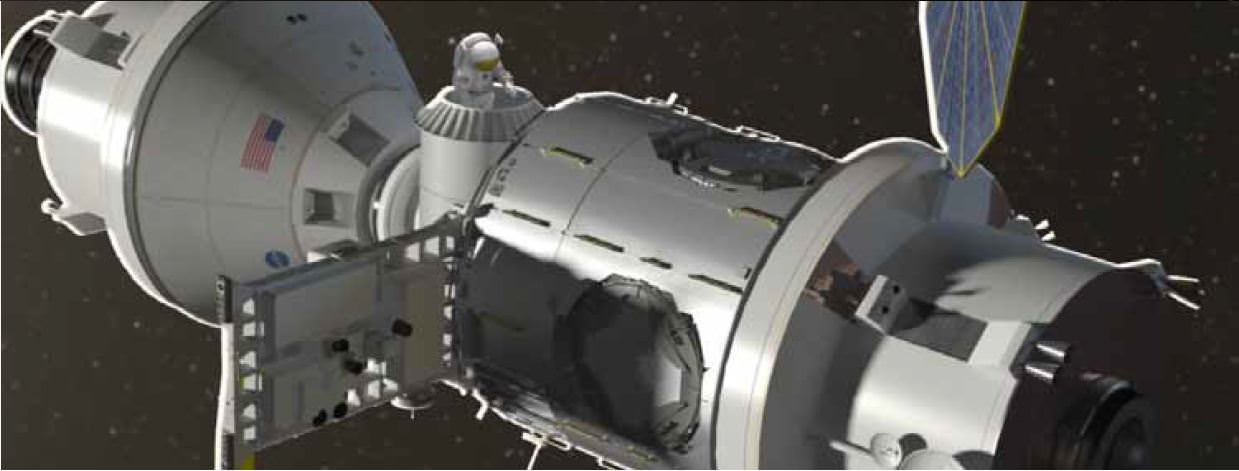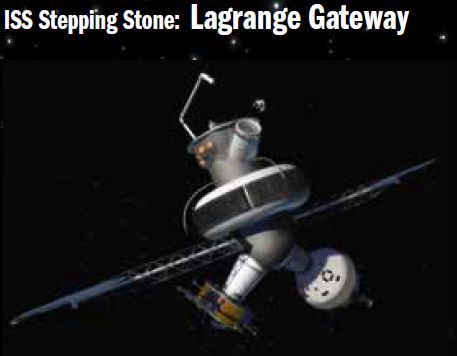The Sun is not exactly placid, though it appears pretty peaceful in the quick glances we can steal with our naked eyes. In reality though, the Sun is a dynamic, chaotic body, spraying out solar wind and radiation and erupting in great sheets of plasma. Living in a technological society next to all that is a challenge.
Continue reading “ESA is Considering a Mission to Give Advanced Warnings of Solar Storms”Future Games: Astronauts Tele-Operate An Earth-Bound Rover … From Space!

Astronauts, start your rover engines. Two astronauts recently remote-controlled a rover vehicle in California from their perch on the International Space Station — about 250 miles (400 kilometers) overhead.
The concept is cool in itself, but NASA has loftier aims. It’s thinking about those moon and asteroid and Mars human missions that the agency would really like to conduct one day, if it receives the money and authorization.
Potentially, say, you could have a Mars crew using rovers to explore as much of the surface as possible in a limited time.
Mars Curiosity and its predecessor rovers have found amazing things on Mars, but the challenge is the average 20-minute delay in communications between Mars and Earth. NASA deftly accounts for this problem through techniques such as hazard avoidance software so that Curiosity, say, wouldn’t crash into a big Martian boulder. (More techniques from NASA at this link.) But having astronauts above the surface would cut down on the time delay and potentially change Mars rover driving forever.

So about that test: two astronauts so far have run the K10 planetary vehicle prototype around a “Roverscape” at NASA’s Ames Research Center in California. NASA calls these runs the “first fully-interactive remote operation of a planetary rover by an astronaut in space.”
Expedition 36’s Chris Cassidy was first up on June 15, spending three hours moving the machine around in the rock-strewn area, which is about the size of two football fields. Then his crewmate Luca Parmitano took a turn on July 26, going so far as to deploy a simulated radio antenna. Another test session should take place in August.
“Whereas it is common practice in undersea exploration to use a joystick and have direct control of remote submarines, the K10 robots are more intelligent,” stated Terry Fong, human exploration telerobotics project manager at Ames.
“Astronauts interact with the robots at a higher level, telling them where to go, and then the robot itself independently and intelligently figures out how to safely get there,” added Fong, who is also director of Ames’ intelligent robotics group.
The tests simulated a mission to the moon’s L2 Lagrangian point, a spot where the combined gravity of the moon and Earth allow a spacecraft to remain virtually steady above the surface. One possibility for such a mission would be to deploy a radio telescope on the lunar side opposite from Earth, far from Earth’s radio noise, NASA said.
These tests also showcase a couple of technical firsts:
- NASA is testing a Robot Application Programming Interface Delegate (RAPID) robot data messaging system to control the robot from space, essentially working to strip down the information to the bare essentials to make communication as easy as possible. (RAPID has been tested before, but never in this way.)
- The agency is also using its Ensemble software in space for telerobotics for the first time. It describes this as “open architecture for the development, integration and deployment of mission operations software.”
Source: NASA
Will NASA Really Build a “Gateway” L-2 Moon Base?
In this artist’s concept, the Orion MPCV is docked to a habitat; an astronaut exits the spacecraft to conduct an EVA. Credit: NASA
Over the weekend, The Orlando Sentinel reported that NASA is considering building a hovering outpost beyond the Moon at L-2 (Lagrangian point 2) that will be a ‘gateway’ to serve as a point for launching human missions to Mars and asteroids. The buzz among the space-related social medias ranged from “this is the greatest idea ever” to “this is make-work for the Space Launch System, (NASA’s new rocket.)” The newspaper’s report cited a White House briefing given in September by NASA Administrator Charlie Bolden, but said “it’s unclear whether it has the administration’s support. Of critical importance is the price tag, which would certainly run into the billions of dollars.”
As always, money is the real issue with any grand ideas that anyone at NASA may have.
And NASA has now officially responded to the The Sentinel’s report and said… well, actually they didn’t really say much at all. Here’s the NASA statement:
“NASA is executing President Obama’s ambitious space exploration plan that includes missions around the moon, to asteroids, and ultimately putting humans on Mars. There are many options – and many routes – being discussed on our way to the Red Planet. In addition to the moon and an asteroid, other options may be considered as we look for ways to buy down risk – and make it easier – to get to Mars. We have regular meetings with OMB (Office of Management and Budget), OSTP(Office of Science and Technology) , Congress, and other stakeholders to keep them apprised of our progress on our deep space exploration destinations. This concept is a part of the Voyages document that we mentioned in an earlier Update posted on NASA.gov in June: http://go.nasa.gov/NASAvoyages.” Refer to page 26 of the chapter titled, “Habitation and Destination Capabilities.”
And so NASA does not deny they are looking into building such a base, and in the document mentioned above, they do provide some interesting details about why exploring cis-lunar space would be important: for scientific reasons, for technological and economic growth and to pave the way for future exploration.
Related content: Paul Spudis’ Plan for a Sustainable and Affordable Lunar Base
And so, what would a space station beyond the Moon be like? The Sentinel suggested it could be built in a budget-conscious way using parts left over from the International Space Station and be placed at what’s known as the Earth-Moon Lagrange Point 2, a spot about 38,000 miles beyond the far side of the Moon and 277,000 miles from Earth where the gravitational pull of Earth and the Moon are at equilibrium, so that a spacecraft could basically “hover” in a fixed spot.
In the document, NASA says the habitat they are designing combines technologies to accommodate a crew of at least four, potentially six for a mission to Mars. The in-space version of the habitat will require docking systems for crew transportation vehicles, and it could be used in cis-lunar space as a Lagrange point facility, or in transit to deep-space destinations, or near a NEA.
Artist’s concept of an inflatable cis-lunar facility, or Lagrange gateway. Credit: NASA
They call the L-2 Gateway base an “ISS Stepping Stone,” saying that the ISS is an invaluable resource for researching and testing exploration capabilities in space, and it may inspire future space station concepts.
“As NASA looks to explore beyond LEO, the agency is considering how a facility in cis-lunar space, potentially stationed at an Earth-Moon Lagrange point, could support research, testing, and astronomical observation, as well as provide a staging point for exploration missions. Such a facility, also known as a Lagrange gateway, would build upon ISS hardware and experience, and would serve as an initial in-space habitat, providing a basis for future long-duration habitation developments.”
Could this ‘Gateway’ idea really fly?
The Sentinel says that from NASA’s perspective, the outpost solves several problems.
“It gives purpose to the Orion space capsule and the Space Launch System rocket, which are being developed at a cost of about $3 billion annually. It involves NASA’s international partners, as blueprints for the outpost suggest using a Russian-built module and components from Italy. And the outpost would represent a baby step toward NASA’s ultimate goal: human footprints on Mars.” — Orlando Sentinel
The report doesn’t mention budget or costs, and if the federal government cuts budgets in the name of deficit reduction, it is very unlikely that NASA will get more money — and it likely could get less – than the current budget of $17.7 billion.
If the past is any indication of the future, this report may wind up like Werner von Braun’s 1950’s vision of getting humans to Mars: a report that future generations look back on and say, “wish we could have done that, and why can’t we do that now?”



